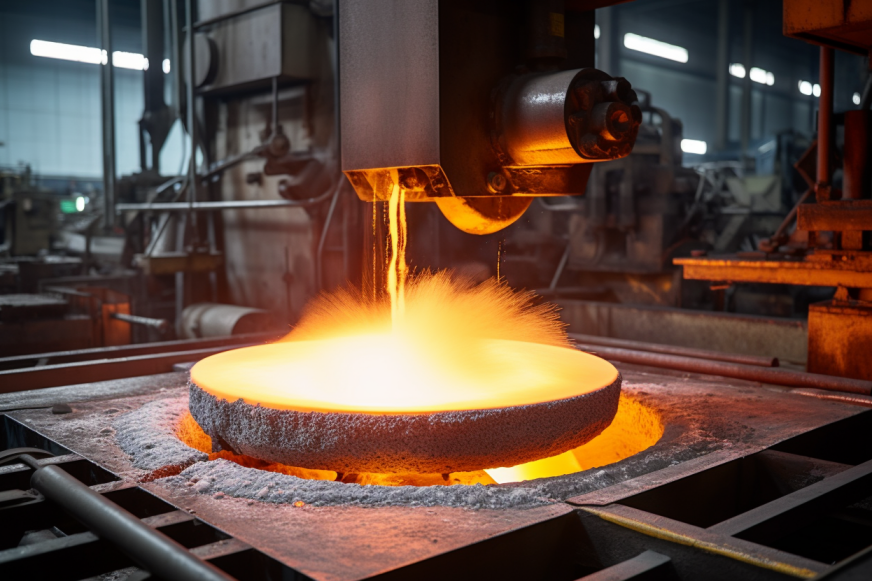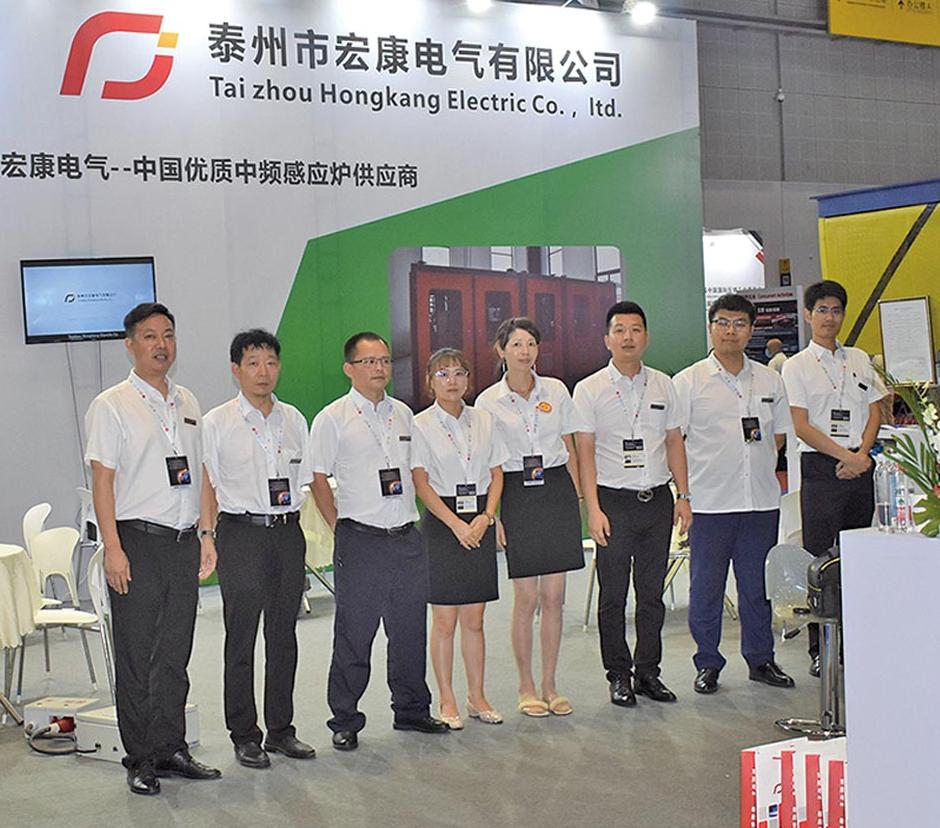Why Is Induction Melting Furnace for Steel Essential for High-Quality Steel Alloys?
The steel industry, a cornerstone of modern infrastructure and manufacturing, continuously seeks innovative solutions to enhance efficiency and reduce costs. Among these solutions, the induction melting furnace for steel has emerged as a transformative technology. This article delves into the intricacies of induction melting furnaces, their relevance to the steel industry, their applications, the challenges they address, and how to customize them for optimal performance.
Understanding Induction Melting Furnaces for Steel
1.1 What is an Induction Melting Furnace for Steel?
An induction melting furnace for steel is a high-efficiency melting unit that uses electromagnetic induction to heat and melt steel. This technology relies on an alternating current (AC) passing through a coil, generating a magnetic field that induces electric currents within the steel. The induced currents produce heat, causing the steel to melt.
Basic Principles of Induction Heating
The core principle of induction heating involves converting electrical energy into thermal energy through electromagnetic induction. When an alternating current flows through the induction coil, it creates a magnetic field that induces eddy currents in the conductive material (steel). The resistance of the steel to these currents generates heat, resulting in melting.
Components of an Induction Melting Furnace
An induction melting furnace comprises several key components, including the induction coil, power supply, crucible, and cooling system. The induction coil is usually made of copper tubing through which water is circulated to keep it cool. The power supply delivers the necessary electrical power to the coil, while the crucible holds the steel to be melted. The cooling system prevents overheating and ensures the longevity of the equipment.
Types of Induction Melting Furnaces
Induction melting furnaces come in various types, including coreless and channel furnaces. Coreless furnaces are more commonly used for melting steel due to their flexibility in handling different batch sizes and alloy compositions. Channel furnaces, on the other hand, are typically used for continuous melting processes and have a built-in molten metal reservoir.
The Status of the Steel Industry
2.1 Global Steel Production Trends
The steel industry is a vital sector globally, characterized by large-scale production and consumption. Recent trends indicate a steady increase in steel production, driven by growing demand from construction, automotive, and manufacturing industries. However, the industry also faces challenges related to environmental regulations, energy consumption, and fluctuating raw material prices.
Market Demand and Supply Dynamics
The global steel market is influenced by various factors, including economic growth, infrastructure projects, and industrial activities. Developing economies, particularly in Asia, are significant drivers of steel demand. Meanwhile, supply chain disruptions and trade policies can impact the availability and cost of raw materials, affecting overall production.
Environmental and Regulatory Challenges
The steel industry is under pressure to reduce its carbon footprint and comply with stringent environmental regulations. Traditional steelmaking processes are energy-intensive and produce significant greenhouse gas emissions. As a result, there is a growing emphasis on adopting cleaner technologies and improving energy efficiency.
Technological Advancements in Steel Production
Advancements in steelmaking technology are crucial for enhancing productivity and sustainability. Innovations such as electric arc furnaces, continuous casting, and advanced control systems are helping the industry achieve higher efficiency and lower emissions. Induction melting furnaces are a key part of this technological evolution.
Applications of Induction Melting Furnaces for Steel
3.1 Melting and Alloying
Induction melting furnaces are extensively used for melting steel and creating specific alloys. Their precise temperature control and homogeneous heating ensure high-quality melts, essential for producing alloy steels with uniform properties.
Production of High-Quality Steel Alloys
Induction melting furnaces allow for precise control over the composition and temperature of steel melts. This capability is critical for producing high-quality alloy steels, which require specific chemical compositions and homogeneity. The ability to achieve consistent and repeatable results makes induction furnaces ideal for manufacturing specialty steels.
Small Batch and Specialty Steel Production
Induction melting furnaces are particularly advantageous for small batch and specialty steel production. Their flexibility in handling different melt sizes and compositions makes them suitable for producing custom steel grades for specific applications, such as aerospace, medical devices, and tool manufacturing.
Recycling and Re-melting Scrap Steel
The efficiency and cleanliness of induction melting furnaces make them an excellent choice for recycling and re-melting scrap steel. By efficiently melting scrap, these furnaces help reduce waste and promote sustainability within the steel industry.
3.2 Precision Casting
Precision casting requires high-quality molten steel to create intricate and detailed components. Induction melting furnaces provide the necessary control and consistency to meet the stringent requirements of precision casting applications.
Investment Casting
In investment casting, molten steel is poured into ceramic molds to produce detailed and complex components. Induction melting furnaces ensure the steel is heated to the precise temperature needed for successful casting, resulting in high-quality parts with excellent surface finish and dimensional accuracy.
Die Casting
Induction melting furnaces are also used in die casting processes, where molten steel is injected into molds under high pressure. The rapid and uniform heating provided by induction furnaces ensures the steel remains at the optimal temperature throughout the process, leading to superior castings.
Centrifugal Casting
Centrifugal casting involves pouring molten steel into a rotating mold to create cylindrical parts. Induction melting furnaces provide the consistent and controlled heating required for this process, ensuring the steel maintains its desired properties during casting.
3.3 Heat Treatment
Induction melting furnaces play a crucial role in the heat treatment of steel, improving its mechanical properties and performance.
Annealing
Annealing involves heating steel to a specific temperature and then cooling it slowly to relieve internal stresses and improve ductility. Induction melting furnaces offer precise temperature control, making them ideal for annealing processes.
Quenching and Tempering
Quenching and tempering are heat treatment processes used to enhance the hardness and toughness of steel. Induction melting furnaces can rapidly heat steel to the desired quenching temperature, followed by controlled cooling and tempering to achieve the required mechanical properties.
Surface Hardening
Induction surface hardening involves heating the surface of steel components to a high temperature and then quenching them to form a hard, wear-resistant layer. This process improves the surface durability of steel parts without affecting their core properties.
Addressing Steel Industry Challenges with Induction Melting Furnaces
4.1 Enhancing Energy Efficiency
Energy consumption is a significant concern in steel production. Induction melting furnaces offer a more energy-efficient alternative to traditional melting methods.
Reduced Energy Consumption
Induction melting furnaces are known for their high efficiency, converting a larger proportion of electrical energy into heat. This efficiency reduces overall energy consumption, leading to lower operational costs and a smaller carbon footprint.
Improved Thermal Efficiency
The direct heating mechanism of induction furnaces ensures minimal heat loss and precise control over the melting process. This improved thermal efficiency translates to faster melting times and lower energy requirements.
Energy Recovery Systems
Some induction melting systems incorporate energy recovery mechanisms, such as regenerative heating, which further enhance energy efficiency by reusing waste heat in subsequent processes.
4.2 Minimizing Environmental Impact
Induction melting furnaces contribute to the steel industry’s sustainability goals by reducing emissions and waste.
Lower Emissions
Unlike traditional fossil fuel-based melting methods, induction melting furnaces produce fewer emissions. The absence of combustion reduces the release of harmful gases, contributing to cleaner production processes.
Efficient Scrap Recycling
By efficiently melting scrap steel, induction furnaces support recycling initiatives, reducing the need for virgin raw materials and minimizing environmental impact. Recycling also helps conserve natural resources and reduce landfill waste.
Cleaner Production Processes
The use of induction melting furnaces results in cleaner production processes with fewer by-products and contaminants. This cleanliness is particularly important for producing high-purity steel grades required in critical applications.
4.3 Improving Production Flexibility
The adaptability of induction melting furnaces allows steel manufacturers to respond quickly to changing market demands and production requirements.
Quick Alloy Changes
Induction melting furnaces enable rapid changes between different steel grades and alloys. This flexibility is essential for manufacturers producing a variety of steel products to meet diverse customer needs.
Scalable Production
Induction melting furnaces are suitable for both small-scale and large-scale production. Their scalability allows manufacturers to adjust production volumes according to demand without significant changes in infrastructure.
Customizable Melting Processes
The precise control offered by induction furnaces allows for customization of the melting process to achieve specific material properties and quality standards. This customization capability is vital for producing steel with tailored characteristics for specialized applications.
Customizing Your Induction Melting Furnace for Steel
5.1 Assessing Production Requirements
Customizing an induction melting furnace begins with a thorough assessment of the production requirements and operational goals.
Determining Batch Sizes
Understanding the typical batch sizes and production volumes is crucial for selecting the appropriate furnace capacity. This ensures the furnace can handle the desired workload efficiently.
Identifying Alloy Specifications
Different steel grades and alloys have specific melting requirements. Identifying these specifications helps in customizing the furnace to achieve optimal melting conditions for each alloy.
Evaluating Temperature Control Needs
Precise temperature control is essential for producing high-quality steel. Evaluating the required temperature ranges and control accuracy ensures the furnace can maintain consistent melting conditions.
5.2 Choosing the Right Furnace Type
Selecting the appropriate type of induction melting furnace based on production needs and constraints is critical for achieving the desired results.
Coreless Furnaces for Flexibility
Coreless induction furnaces are ideal for applications requiring flexibility in batch sizes and alloy compositions. Their design allows for quick alloy changes and efficient melting of different steel grades.
Channel Furnaces for Continuous Melting
For continuous melting operations, channel furnaces offer a built-in molten metal reservoir, providing a steady supply of molten steel. These furnaces are suitable for high-volume production environments.
Hybrid Solutions
In some cases, a hybrid approach combining different furnace types may be beneficial. This approach leverages the strengths of each furnace type to meet specific production requirements.
Conclusion
Induction melting furnaces have revolutionized steel production, offering numerous benefits in terms of efficiency, flexibility, and environmental sustainability. By harnessing electromagnetic induction technology, these furnaces enable precise control over the melting process, resulting in high-quality steel products tailored to specific requirements.


